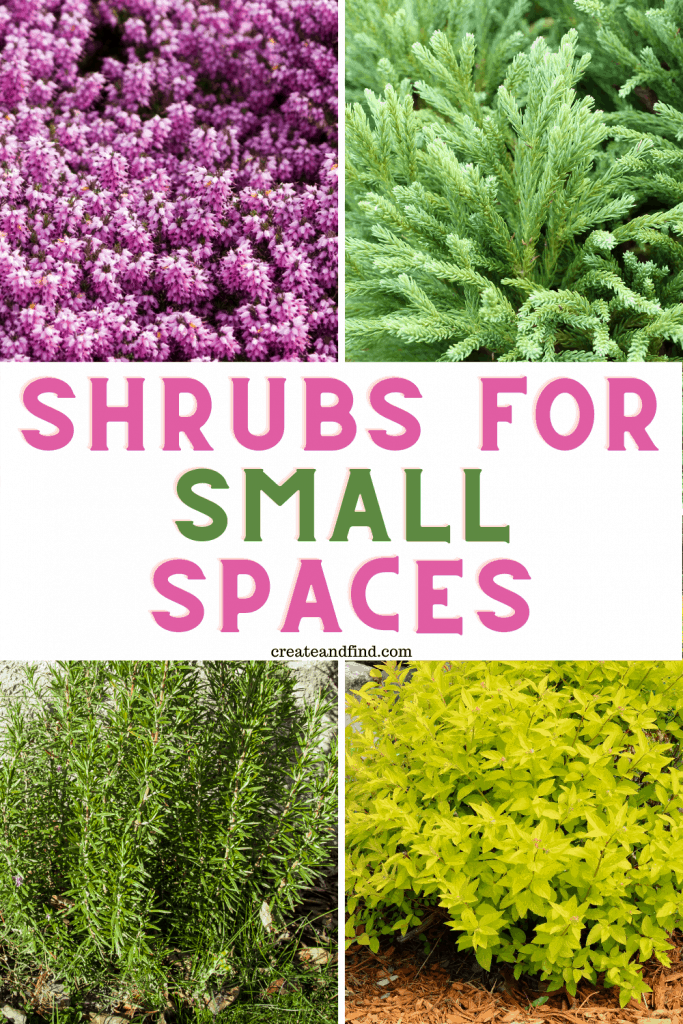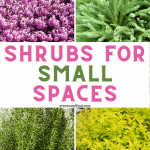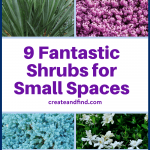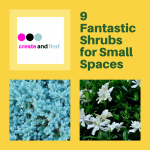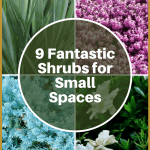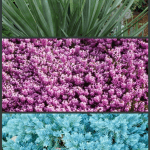If you have a smaller garden area or you just want a few smaller varieties, these shrubs for small spaces will be perfect. Not every landscape needs towering shrubs and trees. And often smaller and slower-growing shrubs mean less maintenance which is always a plus.
There are several types of shrubs for small spaces including multiple boxwood varieties, dwarf gardenia, and spirea. There are even smaller, compact versions of some typically larger shrubs like hydrangea and potentilla. Check out the complete list of small space shrubs below.
Shrubs for Small Spaces
Boxwood
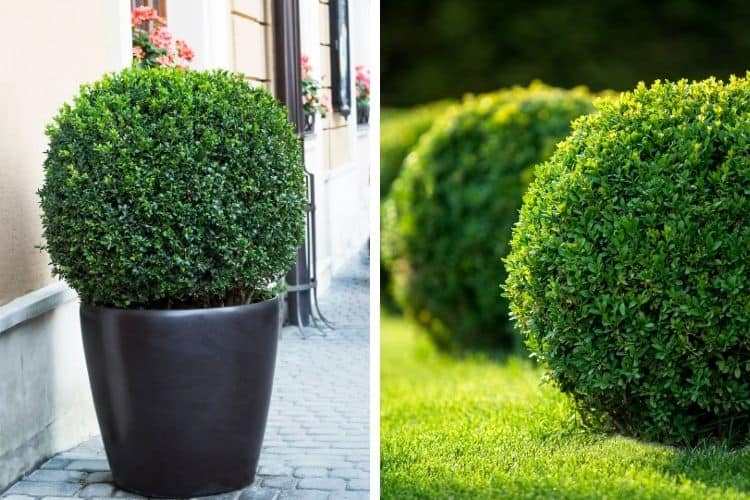
Boxwood shrubs may be one of the most common and recognizable landscaping shrubs. They come in a variety of sizes and are perfect for planting near houses due to shallow roots.
Winter Gem Boxwoods in particular will keep their glossy green foliage year-round. Other varieties can sometimes brown a bit during the cool months.
Because they are typically slow-growing, this makes them ideal shrubs for small spaces. You can prune them into gorgeous shapes and they don’t grow out of control and need constant trimming.
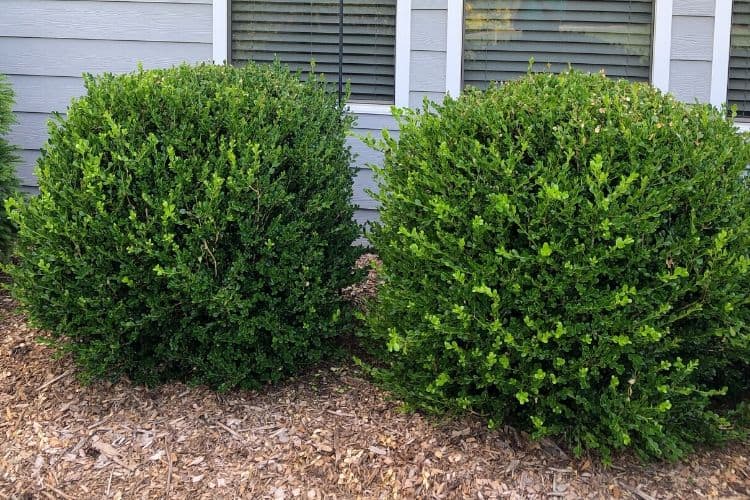
Boxwood Facts
- Zones 4-9 depending on the variety
- Evergreen
- Slow Growing – Varies between 0.5 and 6 inches per year
- Thrive in partial shade, but can grow in full sun as well
- Keep the roots mulched to protect their shallow root systems
- Shallow root systems allow boxwoods to be planted near foundations without causing damage to the structure or sidewalks
- Can be planted in planters as well as the ground
Dwarf or Miniature Gardenia
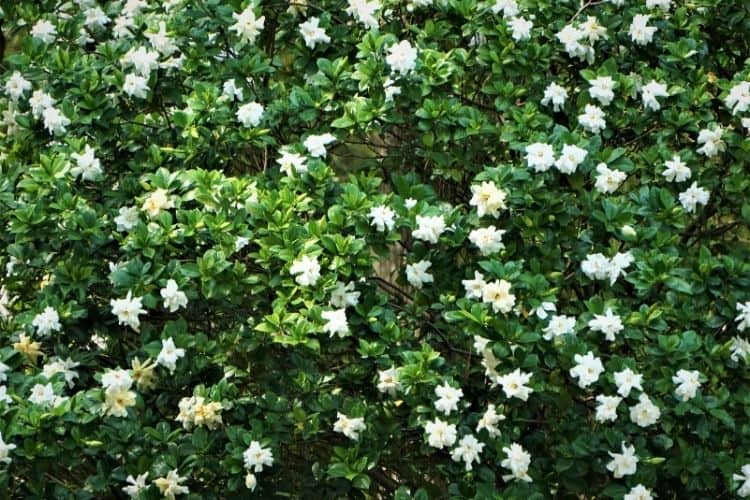
If you are fortunate enough to have experienced the amazing aroma of a gardenia in bloom, you’ll know why this one made the list. It’s a smell that knocks your senses out in a good way!
Dwarf Gardenias are smaller versions of traditional Gardenias. They have abundant blooms that are typically smaller and are excellent in small spaces.
These are perfect options for planting next to patios or walkways so you can enjoy the fragrance.
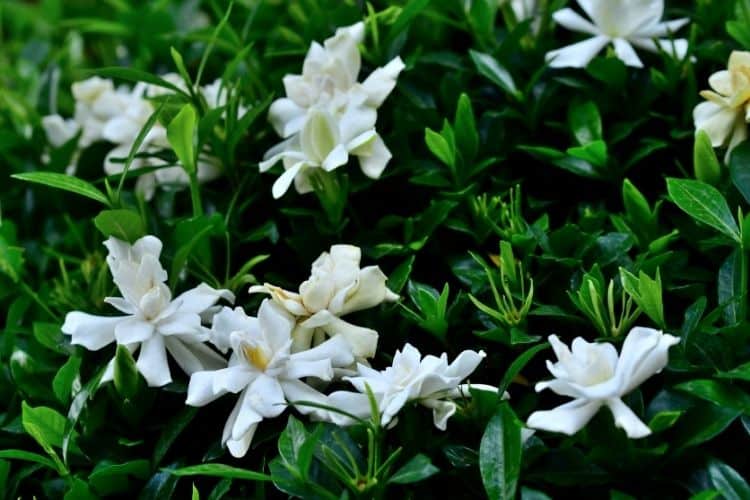
Dwarf Gardenia Facts
- Zones 8-11 are best for these – they prefer warmer climates
- Evergreen
- Produces extremely fragrant flowers in the spring/summer
- Thrive best in morning sun and afternoon shade
- Keep the area around the plant mulched
- The growth rate is relatively slow
- Grows to a mature height of 2-3 feet wide. (**if grown in ideal conditions, can get larger)
Goldmound Spirea
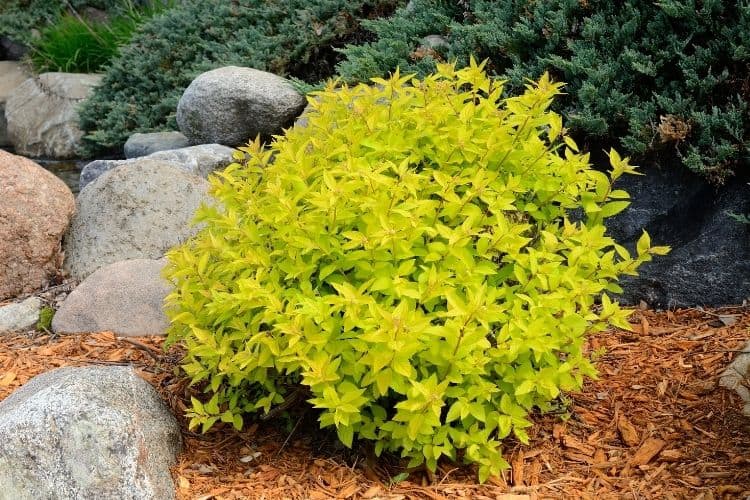
In my opinion, a Goldmound Spirea is a must-have for any yard. The brilliant chartreuse-colored foliage is too gorgeous to miss.
There are several types of Spirea shrubs, but for small spaces, we’re focusing on the Goldmound. It grows to around 3 feet tall and 4 feet wide versus the other varieties which can get over 8 feet tall.
Plant a Goldmound Spirea near a Dwarf Gardenia or Boxwood for a striking contrast of foliage color. They are perfect for brightening up the landscaping.
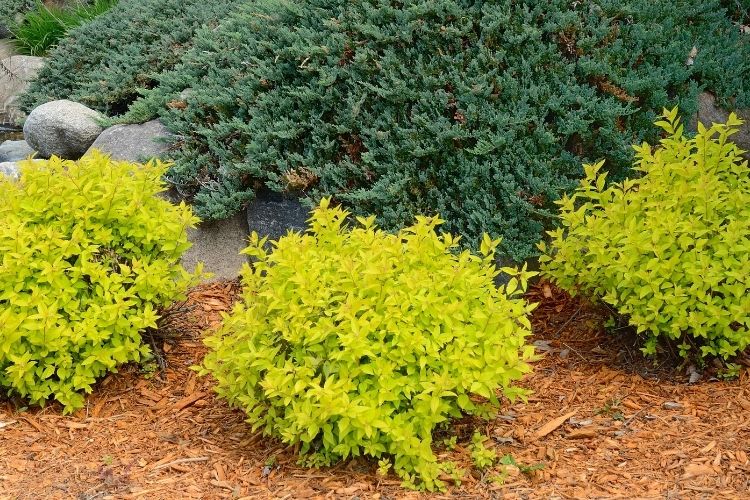
Goldmound Spirea Facts
- Zones 4-8
- Evergreen
- Hardy and low maintenance
- Thrives in full sun but will grow in partial shade also
- Adapts to soil and water conditions
- Easy to trim and maintain
- Mature heights of around 3 feet tall and 4 feet wide
Blue Star Juniper
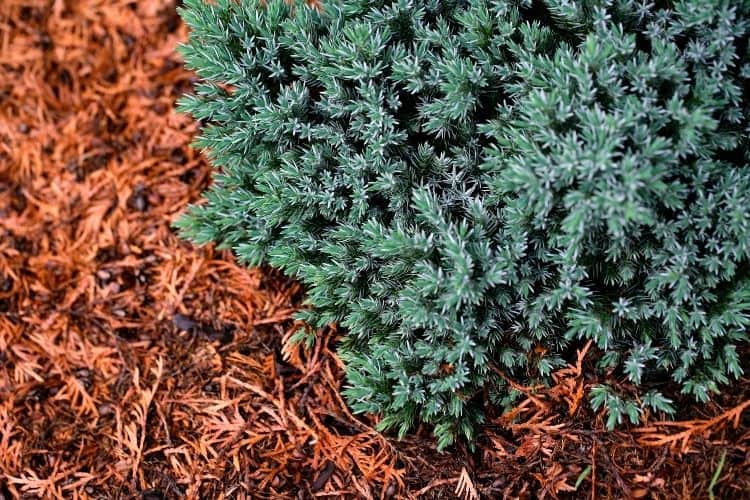
Blue Star Juniper shrubs are compact and dense conifers with striking blue/gray colored foliage. They maintain a relatively small size at maturity (around 2-3 feet tall).
These Juniper shrubs are great for adding eye-catching variety to your small space landscaping. Pair them with a Goldmound Spirea for an opposite but pleasant color palette.
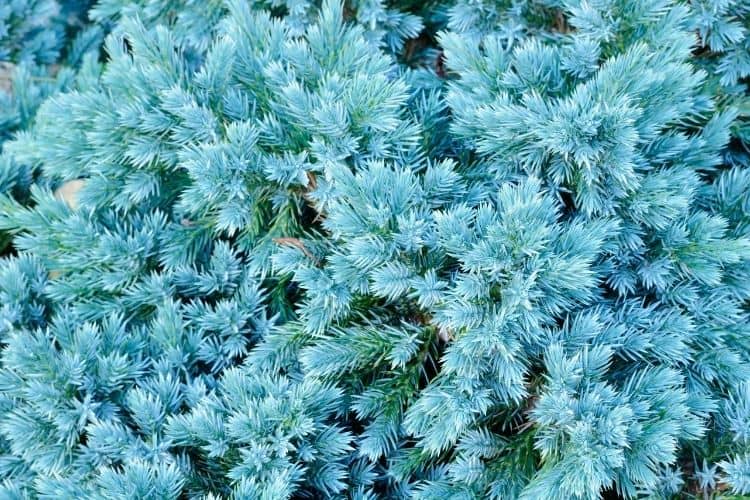
Blue Star Juniper Facts
- Zones 4-8
- Prefers full sun
- Can tolerate drought conditions once established
- Maintains a small size – grows to around 2-3 feet tall
- Evergreen with bluish, greenish, or silvery tinged foliage
- Slow growing
Rosemary
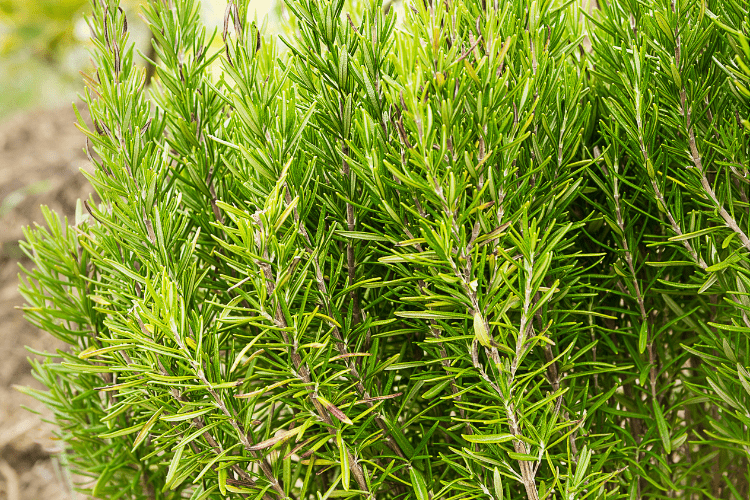
Rosemary is a perennial herb that can be a beautiful addition to your landscaping. It’s a good choice for a shrub for small spaces because you can add it to a planter, plant it in the ground or use it for a border plant for your annuals.
Another plus for planting Rosemary is the aroma and taste of the foliage. Not only is it pretty to see, it can be used in a variety of recipes for added flavor.
Rosemary bushes can be trimmed if needed and you can use the foliage year-round.
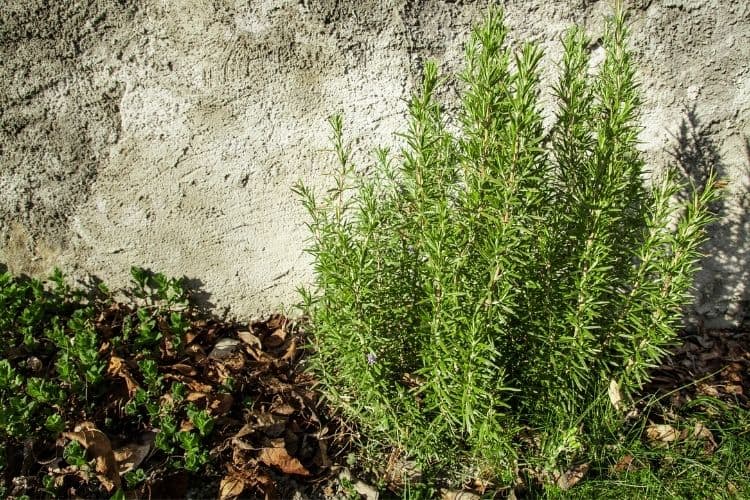
Rosemary Facts
- Zones 7-10
- Evergreen
- Edible foliage you can use year-round
- Prefers full sun but can tolerate afternoon shade as well
- Grows to a mature height between 1 and 6 feet and 1-3 feet wide, but can be trimmed for smaller spaces
- An excellent choice for planters or patio herb gardens
Cryptomeria Globosa Nana
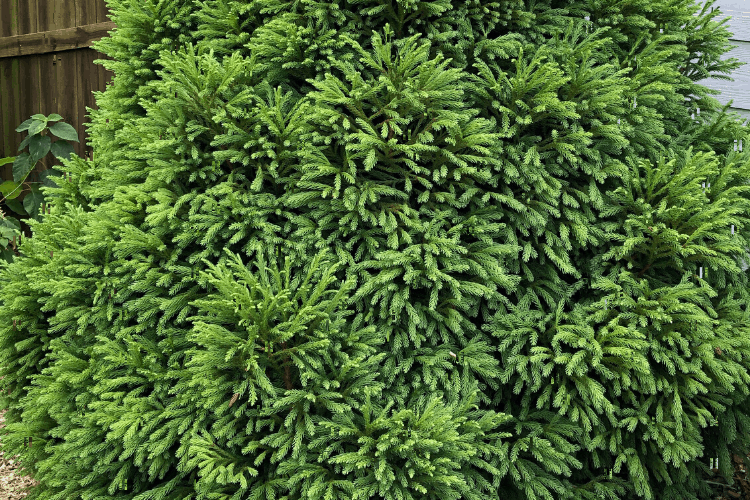
Strange name I know, but the Cryptomeria Globosa Nana variety is a great choice for a small space shrub. It’s not fast-growing and matures at about 5 feet tall so it won’t take over your small spaces.
This is a great option for borders, close to houses, and under windows when you don’t want to block the entire window. They remind me of bright green trolls with their feathery arched looking foliage.
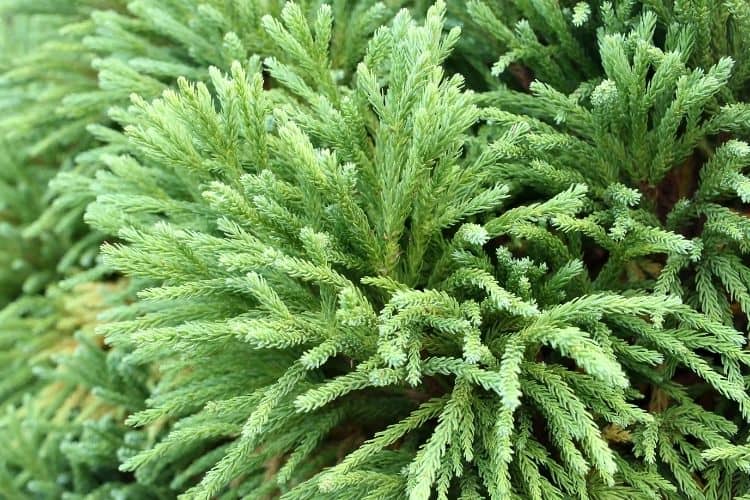
Cryptomeria Globosa Nana Facts
- Zones 5-9
- Evergreen
- Deer Resistant
- Can be grown in containers also
- Grows to around 5 feet wide and 5 feet tall at maturity
- Bright green foliage that requires very little maintenance
Winter Heath
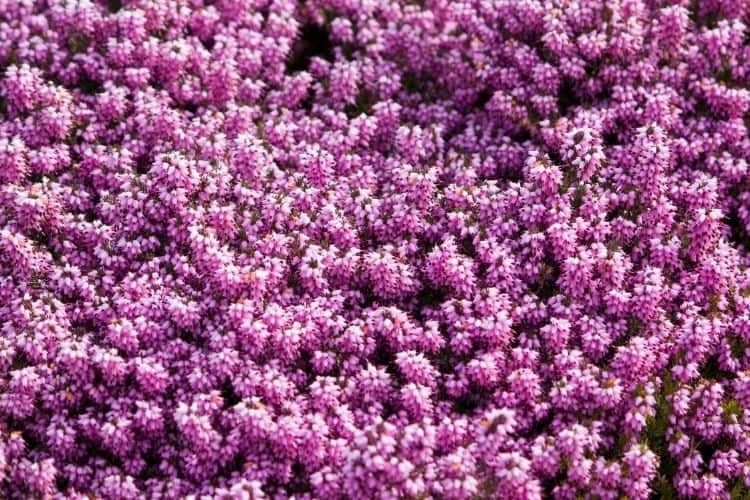
Winter Heath is just one member of the Ericaceae family of plants. There are a huge variety of options for small spaces and something for every planting zone.
The Winter Heath variety produces beautiful reddish-pink flowers from Winter to Spring and can survive down to -25 degrees and even blooms under snow.
Adding Winter Heath is easy because they are easy to care for, can grow in many conditions, and prefer well-drained sandy soil.
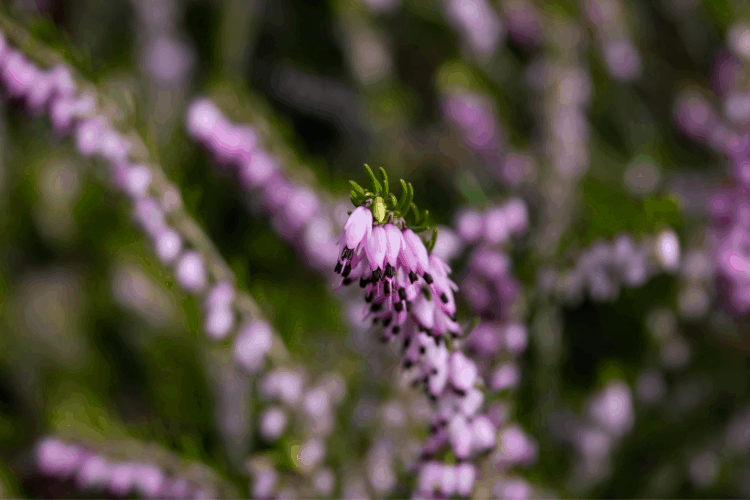
Winter Heath Facts
- Zones 3-7
- Evergreen
- Produces flowers in the winter months
- Grows to 6-12″ tall and 18-30″ across
- Prefers full sun
- Requires adequate drainage in acidic soil
Yucca
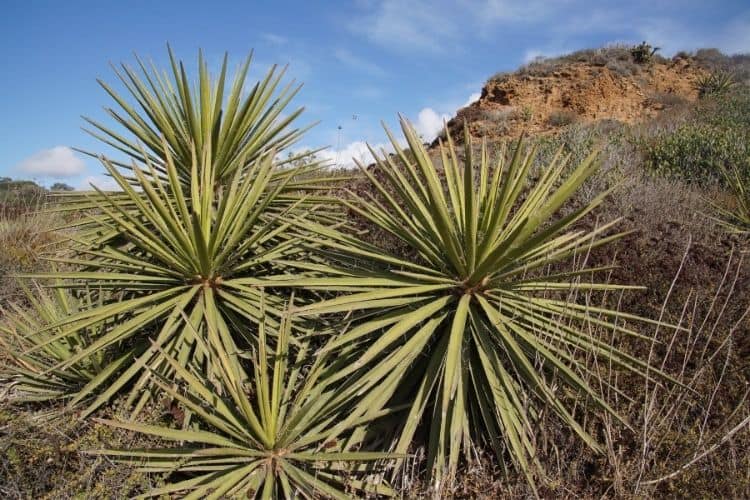
If you are interested in drought-tolerant and virtually no maintenance, the Yucca is a good option for a small space shrub.
You don’t need many to fill a small space and if you provide them an area with full sunlight, they will thrive. The Yucca has an interesting spiny shape that can add texture and variety to your landscaping.
They are succulents in the Agave family and the smaller varieties will mature at 1-3 feet. Others get much larger and can grow in clumps.
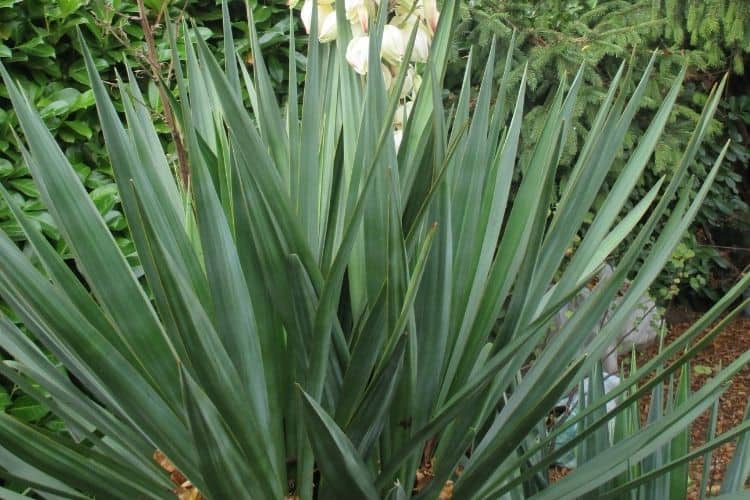
Yucca Facts
- Zones 4-11 depending on the variety
- Evergreen
- Succulent
- Drought tolerant – does not like soggy conditions
- Plant away from foundations or walkways since root systems can damage these structures
- Spines can be sharp and painful so plant away from play areas
Dwarf Mugo Pine
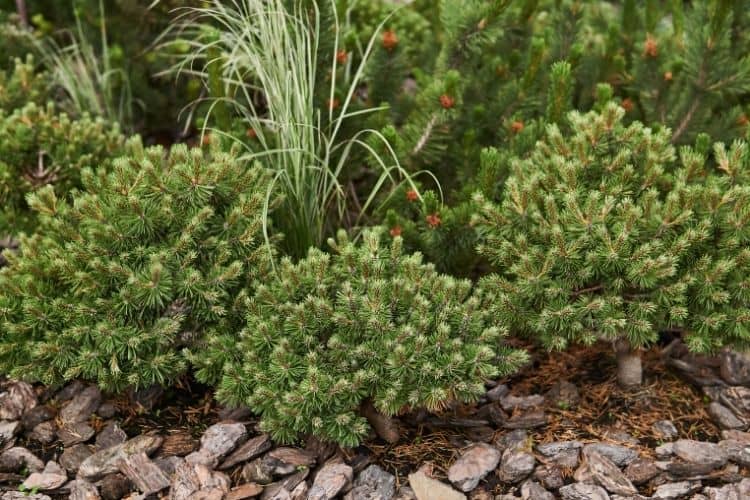
Dwarf Mugo Pine is an option for smaller spaces since it’s slow-growing and takes about 10 years to reach a mature height of 3-5 feet tall and width of 6-10 feet.
They are evergreen conifers that have dark green needle foliage and looks excellent paired with brighter colored shrubs like Spirea or with Winter Heath for a striking contrast in color.
You can add Dwarf Mugo Pine to small rock beds, in front of larger shrubs for height variety, or they can stand alone. Give them full sun and they’ll thrive.
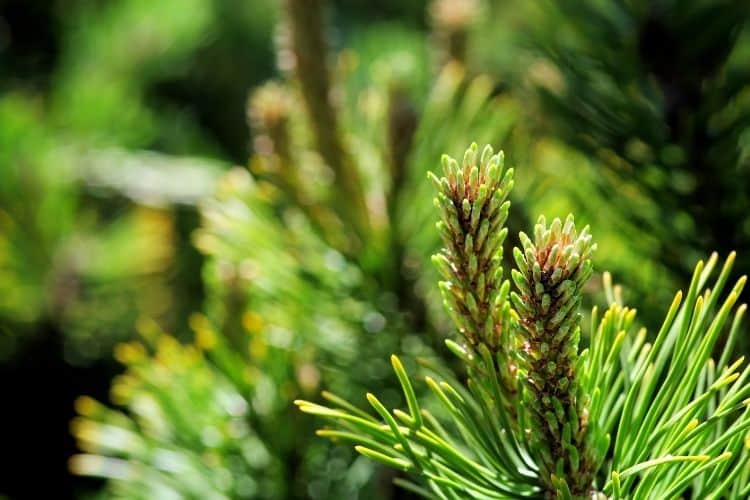
Dwarf Mugo Pine Facts
- Zones 2-8
- Evergreen
- Slow growing – takes a decade to reach mature 3-5 feet tall
- Perfect for well-drained soil, will even grow in sandy, rocky soil
- Extremely cold hardy
- Stays neat and mounded without the need for constant trimming
Hopefully, these have given you some good ideas for shrubs for small spaces. You don’t need tons of acreage to have gorgeous and interesting landscaping.
You also don’t have to spend hours every day tending to your plants when you can add in a few low maintenance shrubs and trees.
For best results when planting, make sure to know your planting zones!

